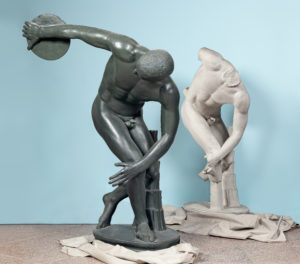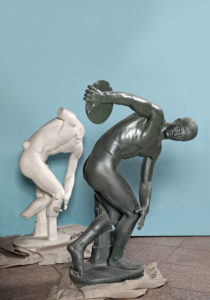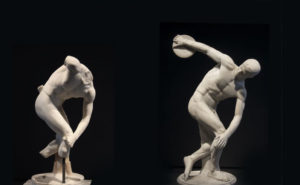The beauty of an athletic gesture… the discobolus
Due to the coronavirus pandemic, the Olympic Games scheduled for summer 2020 were postponed to 2021.
The Olympic Games have an ancient history: they were celebrated every four years from 776 B.C. to 393 A.D. in the city of Olympia, Greece. In order to attend the games and the religious ceremonies that accompanied them, even wars were suspended with a truce. It was Pierre de Cubertin who proposed them again in 1896, in Athens.
The Greek sculptor Mirone, who lived in the 5th century B.C., cast bronze statues of victorious athletes. The Museum of Archaeology possesses two plaster casts of the famous Discobolus crafted by Mirone around 455 B.C., perhaps for the city of Sparta. The original bronze is not preserved, but the statue is known thanks to marble copies from the Roman era: among the most famous are the Lancellotti Discobolus, the most complete, and the Castelporziano Discobolus, with the head missing. Both are preserved in the National Roman Museum of Palazzo Massimo in Rome.
The athlete is portrayed in the moment of the greatest dynamic torsion, just before the discus is thrown.
The plaster cast of the Roman Lancillotti copy is coloured with green-black paint to suggest the colour of bronze darkened by the patina of antiquity. In fact, the plaster casts were all purchased, for educational purposes, between the end of the XIX century and the beginning of the XX century.
The athletic gesture immortalized by Mirone in antiquity will come back to life with the next Olympics!
In the photos, the plaster casts from the Museum of Archaeology of the University of Pavia, the Lancellotti Discobolus and the Castelporziano Discobolus.




